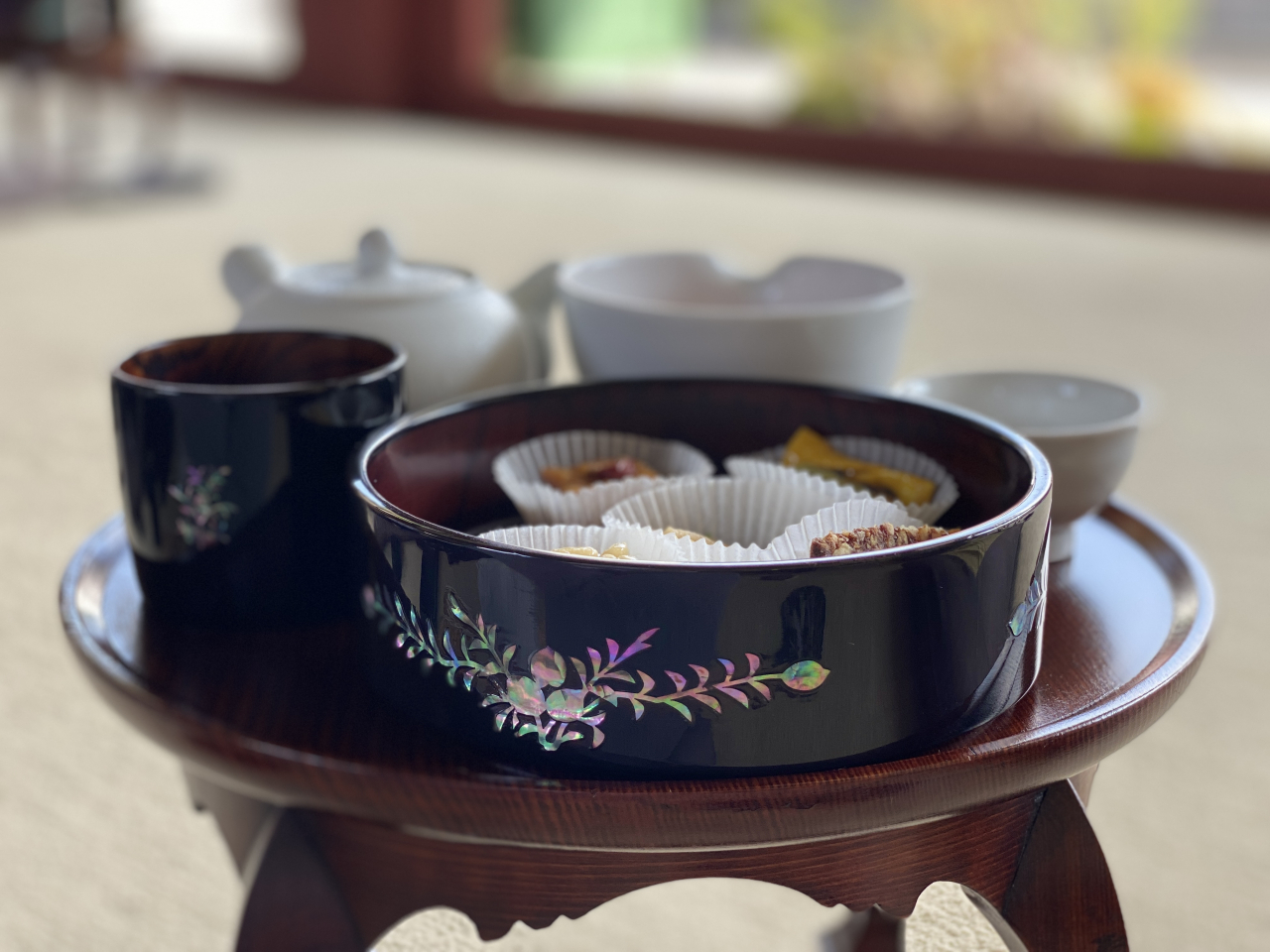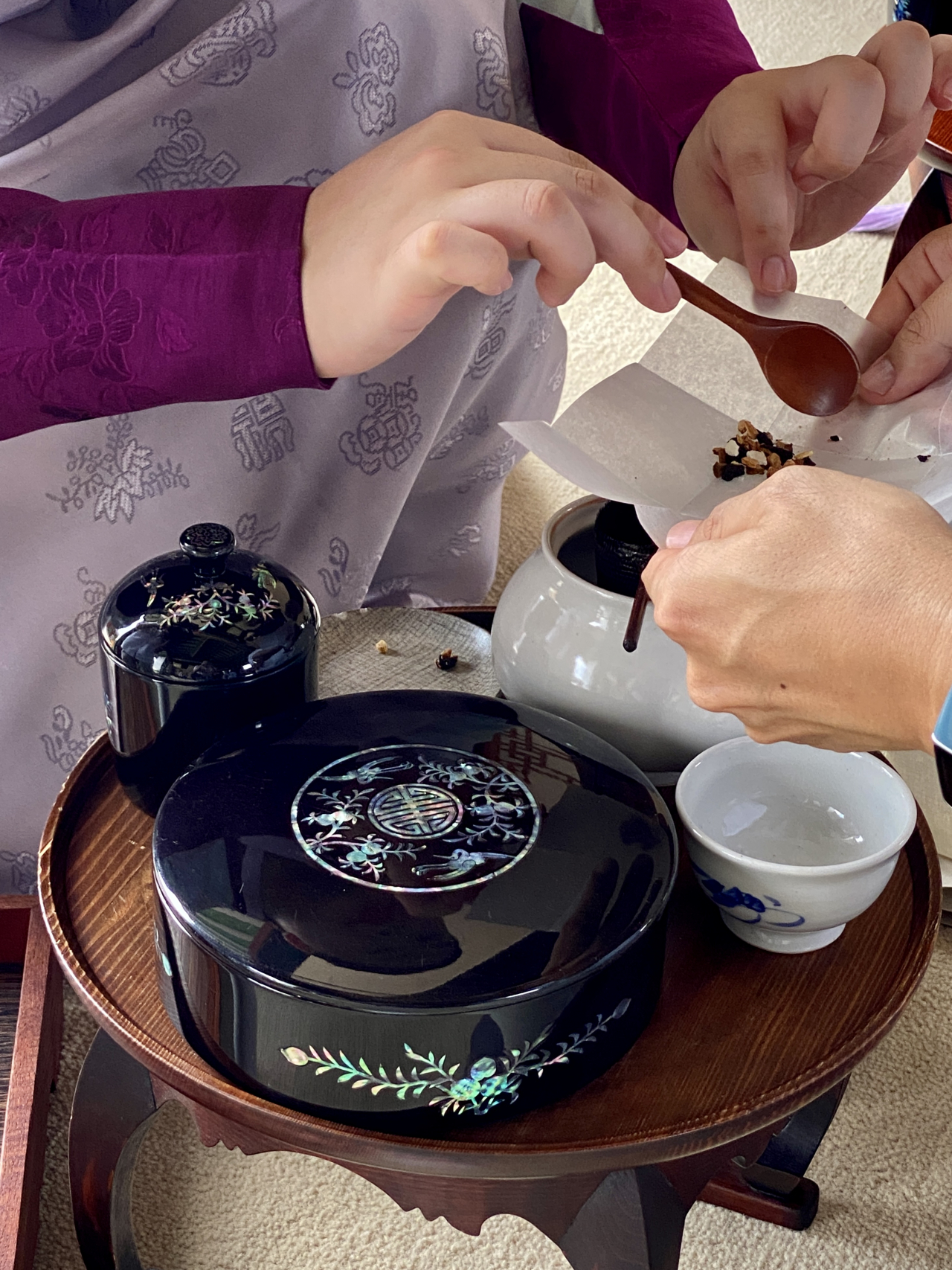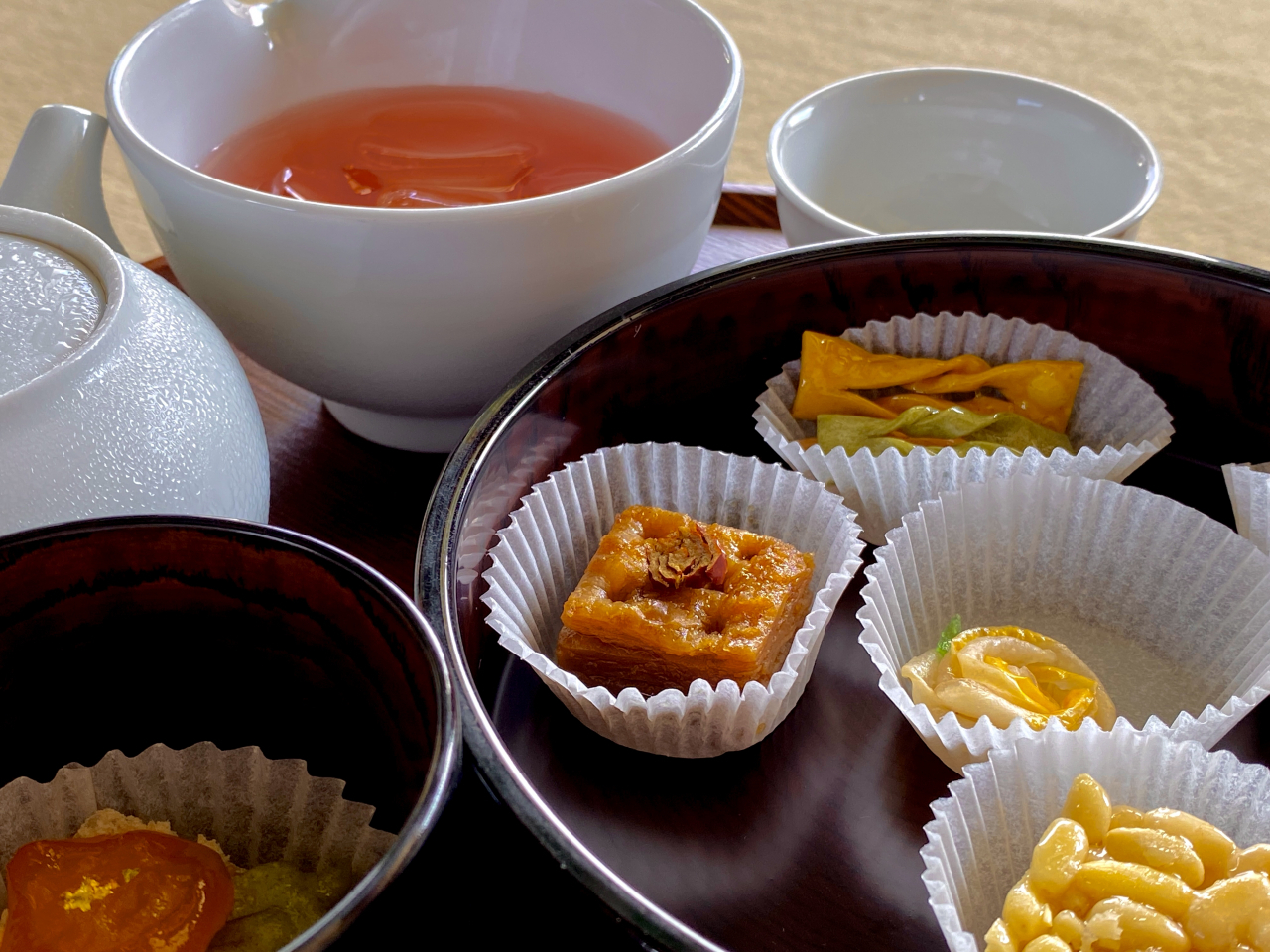 |
The Gyeongbokgung Saenggwabang program offers two courses, which consist of one of six traditional teas and six delicate desserts through Oct. 21. (Hwang Joo-young/The Korea Herald) |
Savor delicacies enjoyed by Korean kings and queens at Gyeongbokgung in central Seoul.
Organized by the Korea Cultural Heritage Foundation, the "Gyeongbokgung Saenggwabang" program brings to life palace desserts and tea as documented in the "Veritable Records of the Joseon Dynasty" from the Joseon era (1392-1910).
"Saenggwabang," located in the royal kitchen known as "sojubang," was a dedicated space for making desserts and snacks for royals.
Stepping inside saenggwabang at the palace, visitors are greeted by attendants dressed in hanbok as the court ladies of Joseon did.
 |
A guide dressed in traditional hanbok aids a visitor in putting herbs and nuts into a ceramic teapot. (Hwang Joo-young/The Korea Herald) |
The Saenggwabang program offers two choices of tea and snack sets: The chodujeomjeungbyeong set and the juak set. Each set comprises a traditional tea and six delicate pieces of dessert made with ingredients like toasted rice and dried honeyed fruits. One can choose from six different tea varieties.
The chodujeomjeungbyeong set features a rice cake made with glutinous rice, fried red beans, or chodu, jujubes and pine nuts. This delicacy, often mentioned in the "Veritable Records of the Joseon Dynasty," was served at King Gojong's 50th birthday luncheon.
The juak set features juak, a deep-fried wheat-based hangwa, or traditional Korean confectionery sweetened with honey. The cinnamony sweetness makes juak a favorite even among young people today.
Among the six teas, give omija tea a try. Made from a red berry of the same name, the tea is said to have five flavors -- sourness, bitterness, sweetness, pungentness and saltiness. Omija tea was served to King Jungjong to alleviate fever and thirst, according to the "Veritable Records of the Joseon Dynasty."
 |
The chodujeomjeungbyeong set consists of a rice cake, five hangwa and omija tea. (Hwang Joo-young/The Korea Herald) |
The taster program runs until Oct. 21. For foreigners, the program will be available in multiple languages on Oct. 16 only.
Tickets for the Oct. 16 program go on sale Oct. 12 online at Ticketlink, with prices set at 15,000 won for the chodujeomjeungbyeong set and 12,000 won for the juak set.



![[Weekender] Korea's traditional sauce culture gains global recognition](http://res.heraldm.com/phpwas/restmb_idxmake.php?idx=644&simg=/content/image/2024/11/21/20241121050153_0.jpg)



